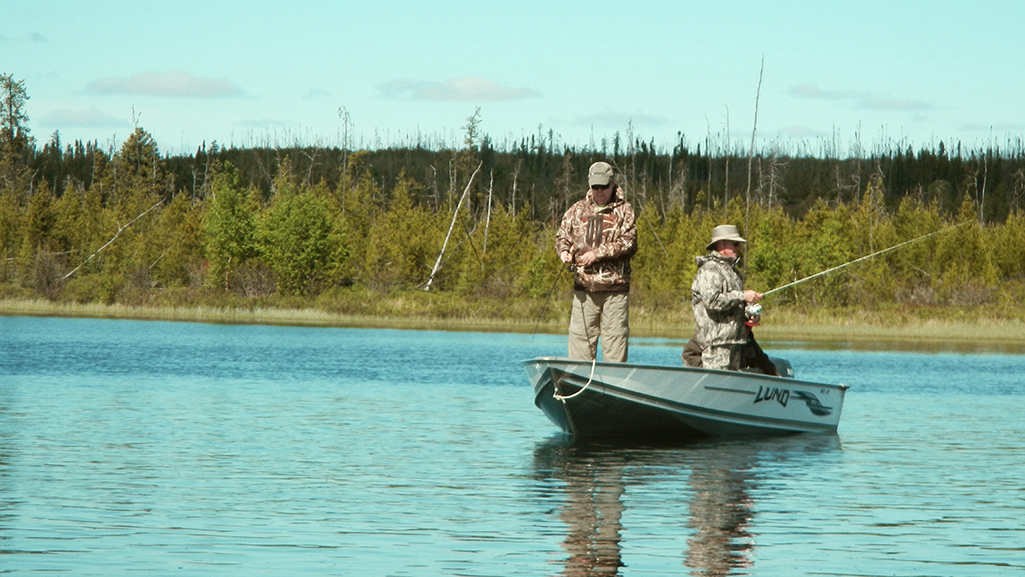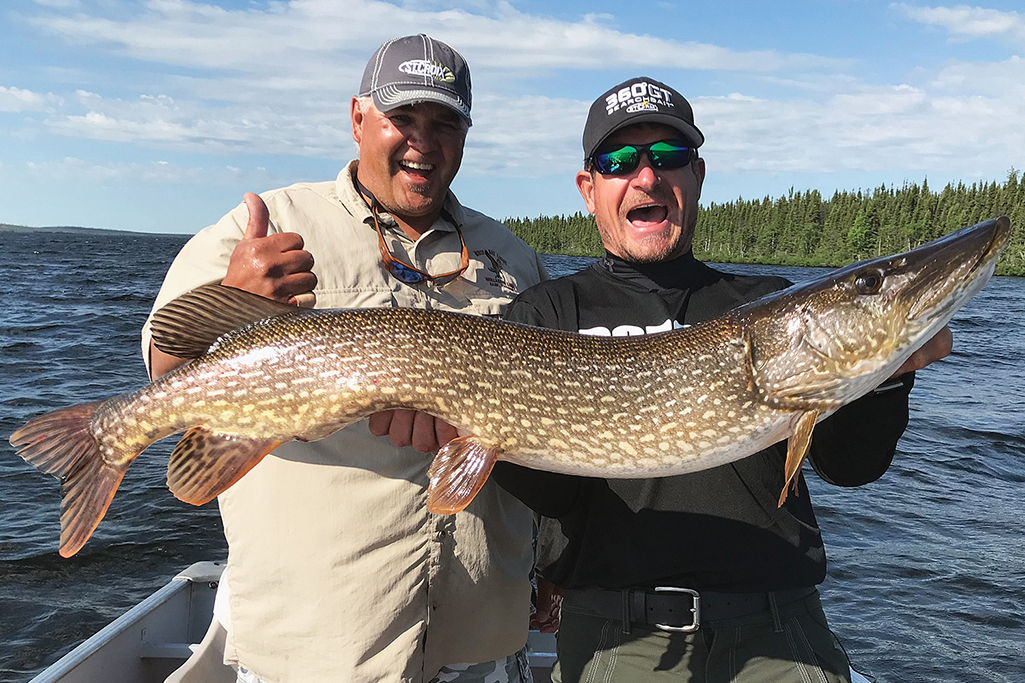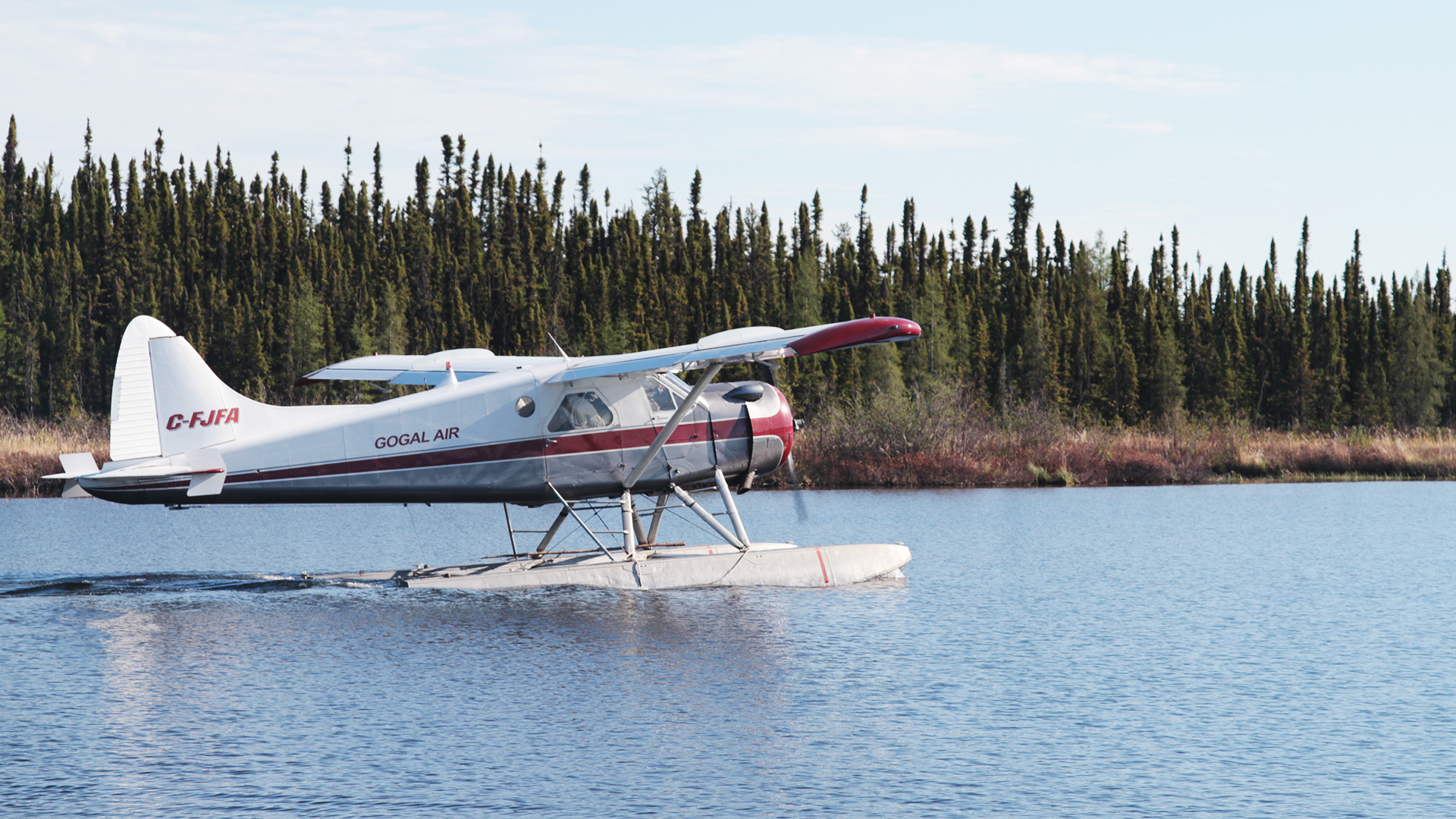Fishing Saskatchewan: ‘In Between’ for Big Northern Pike
Home of the monster pike
To consistently catch trophy pike these days, you have to venture to far northern Canada, to vast bodies of water where toothy critters are the dominant species and plentiful enough to deliver frequent hookups for anglers. While big pike are present and available to catch in most Ontario lakes, it’s unlikely you’ll catch numerous fish over 40 inches during a typical fishing trip. For true numbers of trophy-class fish, set your sights on the provinces of Manitoba and Saskatchewan and you won’t be disappointed.

MidWest Outdoors TV traveled to Wollaston Lake last July as guests of Minor Bay Lodge, known as “The Home of the Monster Pike.” Located on a vast, 1200 sq. kilometre (800 sq. mile) lake in the far northeastern corner of Saskatchewan, this remote destination offers pike anglers everything they desire from a world-class destination. At this latitude, the open-water season is very short. Ice-out often occurs around June 1. By the end of August, winter weather is already trying to get a grip on the landscape and the lodge closes for the year.
Wollaston Lake is a massive body of water. The main basin stretches across more than 130 kilometres (80 miles) of open water. Much of this section of the lake is hundreds of feet deep. Prehistorically huge lake trout roam the depths, but this deep water offers little in terms of pike habitat.
However, the southern end of the lake (where Minor Bay Lodge is situated) is dominated by endless miles of back bays, bogs, and expansive cabbage beds—the absolute best in terms of pike habitat. The number of hotspots to fish truly is mind-boggling. Some of the larger creek channels and bogs run for miles upstream before the water gets too skinny for boat traffic to pass. Many of these mud-bottom bogs are four to six feet deep, literally for miles. For the month of June, northern pike of all sizes roam these shallows (which are the quickest portions of the lake to warm in the sun), feasting on hatchling waterfowl, suckers, and smaller members of their own kind.
Pike in cabbage
As the southern basin warms and the calendar turns to July, cabbage beds come into play. Some clusters of vegetation are larger than football fields. While the stalks typically grow sparsely in this far-north, cold-water environment, they nonetheless provide ambush cover for pike. Plus, baitfish such as perch and the occasional walleye offer bonus feeding opportunities for big pike.
Depending on the actual ice-out date and how quickly the waters warm in a given season, if you visit an angling destination at this latitude, you may find more fish to catch in the mud-bottom bays, or these cabbage fields, or in both locations. This is the “in-between” season, when it’s important to have a variety of tactics in your tackle arsenal in order to catch fish from both types of habitat.
Fishing the backwaters requires stealth. In water that’s only four to six feet deep, trophy pike can be spooky. The thump of artificial noise in an aluminum boat can set them off the bite. What’s more, because cold water slows down the metabolism of fish, they digest food slowly and therefore eat less frequently. Coupled with the fact that an average redhorse sucker might weigh 2 to 3 pounds in these waters, one meal will satisfy a pike for a good while. To trigger bites, consider these options:

Small topwater lures
Topwater lures are ideal for Saskatchewan pike roaming back bays. Many anglers believe “bigger lure, bigger fish” but that’s definitely not the case in these waters. Small topwater lures—especially versions that wobble rapidly side-to-side—have an irresistible triggering effect on these fish. During the TV shoot, a topwater lure designed primarily for largemouth bass (the Storm Wake Crank) proved deadly for numbers of big fish.
Soft plastics
A white or smoke-coloured “fluke-style” soft plastic, 6 to 9 inches long, Texas-rigged on a wide-gap, long-shank 5/0 or 6/0 hook, is a perfect “slow-fall” presentation to cast in shallow backwaters. Adding twitches to your retrieve enhances the enticement. The lure appears helpless to a cruising pike. Fluke-style baits—featuring a forked or ribbon tail or a twister or paddletail—can be fished slow and shallow with a minimum of surface disturbance when entering the water on the cast. A weight is not needed in shallow backwaters. Usually, a 12-inch stainless steel or wire leader in 40- to 60-pound test is all that’s needed to pull the bait down. Additionally, the inline swivel on the leader minimizes line twist.
Swimbaits
Since its introduction a few years ago, the 5.5-inch Storm 360GT Searchbait has been a hot ticket for us at Minor Bay Lodge. Indeed, the 3.5- and 4.5-inch versions have produced a variety of species far and wide across upper Midwest fisheries. A boot tail body pre-rigged on a rattling jighead features a 60-degree line tie that helps the lure run true on the retrieve. Historically, our best colours for Saskatchewan pike have proven to be Smelt, Herring, and Houdini. A recently-introduced weedless jighead allows the lure to be fished through cabbage stalks effortlessly—a nice bonus!

In-line spinners
A bucktail lure (single treble hook, not tandem-style) is hard to beat for fishing the cabbage beds. Depending on how much vegetation is growing to the surface, few other lures can run weed-free on multiple casts. True to form, on our July TV trip, a #6 or #7 Vibrax bucktail produced the most bites from pike that patrolled the weed beds. A couple of the biggest fish of the trip fell prey to a Vibrax. A good pair of polarized sunglasses provides clarity during the cast and retrieve so a spinner can be steered back to the boat, weed-free. I like a retrieve speed that produces a bulge of water as the lure runs just below the surface, and watch intently for the strike, which often is an explosion from a huge fish. Be sure to bring contrasting colours: a black bucktail to provide contrast against the sky, and white bucktails that blend into high skies. Different fish will show a preference to one colour or the other, so I like to switch from time to time, even when fishing the same stretch of water, in order to contact the most bites.
Jerkbaits and big crankbaits
Lures with larger profiles have their place in your Canadian pike arsenal. Some big northerns always can be contacted on rocky, tapering points adjacent to the larger lake basin areas, especially when these points are windswept. Schools of suckers will migrate between the backwaters and the rocky shorelines. Plus, an occasional whitefish or small lake trout will wander into harm’s way from a marauding pike, as well. Whenever fishing these locations, a #14 Husky Jerk or Rapala Super Shad Rap (especially in shad, gold, or silver patterns) is a good choice to cast. Fish with a downward rod angle to drive the lure deeper—even banging into the rocks for added commotion.
Land your monster pike
Fishing adventures to far-north fisheries for trophy pike are thrilling and rewarding experiences. Vicious strikes from monster fish are the norm when you travel off the grid to the higher latitudes. The allure of remote waters and the rewards of many big fish deliver a “trip of a lifetime” for any angler who makes the journey!
For more information on fishing adventures in Saskatchewan click here.
By Roger Cormier
 Roger Cormier is a Co-Host for MidWest Outdoors Television and Associate Editor/Staff Photographer for MidWest Outdoors Magazine.
Roger Cormier is a Co-Host for MidWest Outdoors Television and Associate Editor/Staff Photographer for MidWest Outdoors Magazine.
Reprinted with the permission of Midwest Outdoors.

